Terme Tettuccio, Montecatini: A Guide to Italy’s Historic Thermal Spa
The spring waters of Terme Tettuccio have been coveted for their health benefits for generations. In fact, references stretch back as far as the Roman times. It was the Grand Duke of Tuscany, Pietro Leopoldo, who was responsible for turning the town of Montecatini Terme to the health resort and spa town that it is today. He ordered the building of several Terme: Bagno Regio (1773), Terme Leopoldine (1775) and, finally the beautifully encased Terme Tettuccio (1779), and also planned an efficient canalisation of the spring waters, and ordered the land reclamation of the marshy areas surrounding the town, in order to clean the air.
Soon after – people flocked in their thousands.
In the below images, the wrought iron gates and embellishments, along with the glass were created by Berti of Pistoia. The statues are the work of Corrado Vigni, while the clock, whose two bronze statues on either side symbolise Trade and Abundance, is by Guido Calori.
Further reading: We included the Funicular between Motecatini Terme and Montecatini Alto in our favourite under-the-radar things to see in Tuscany.
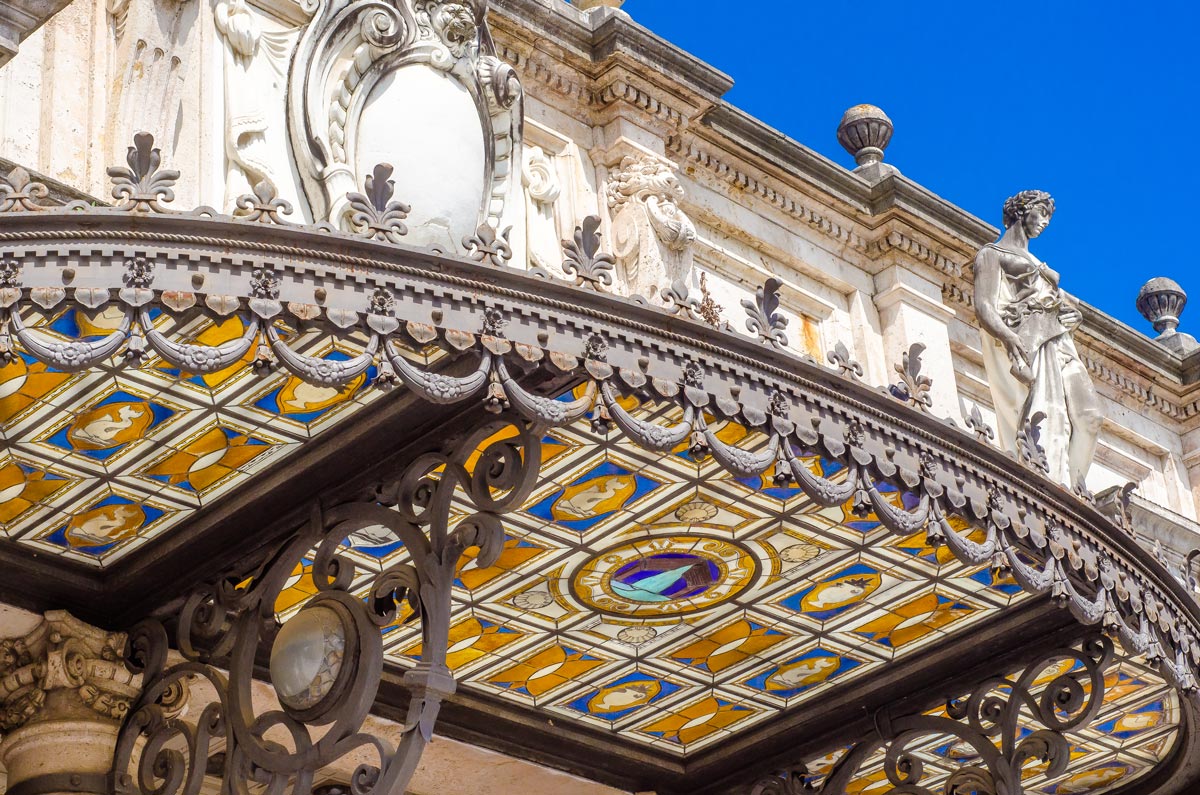
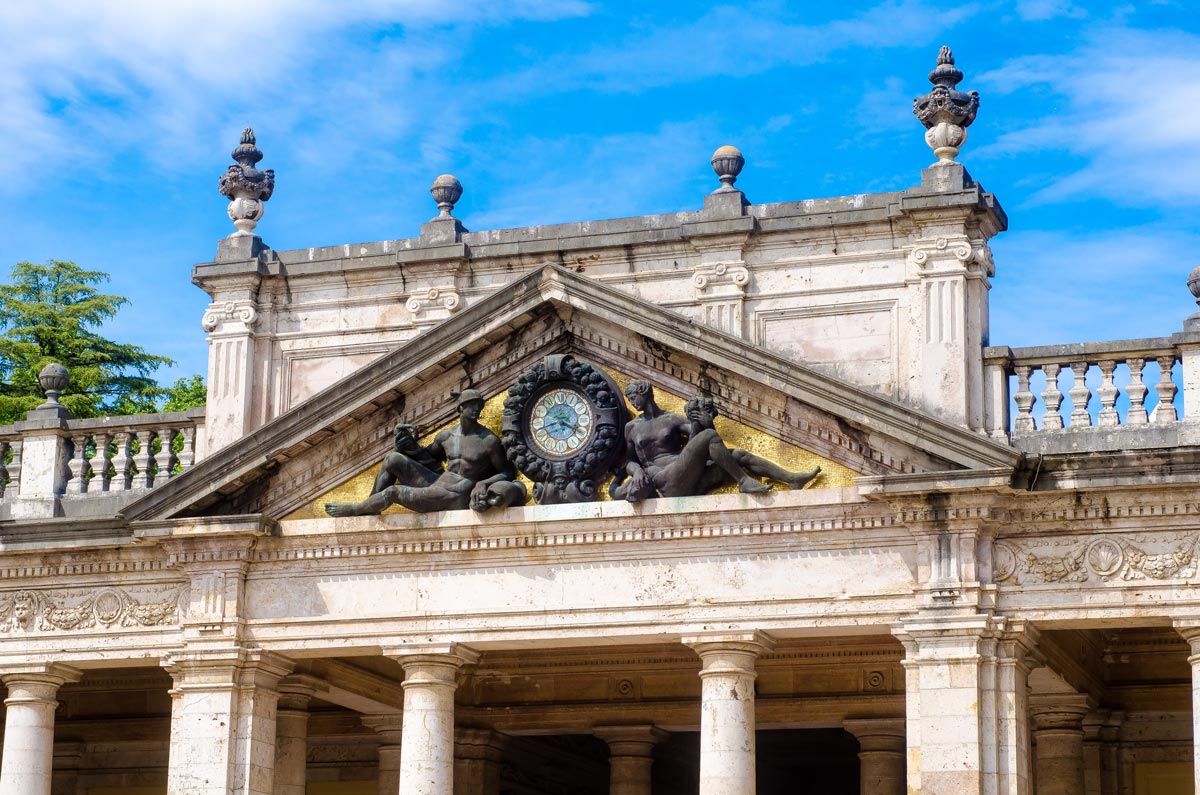
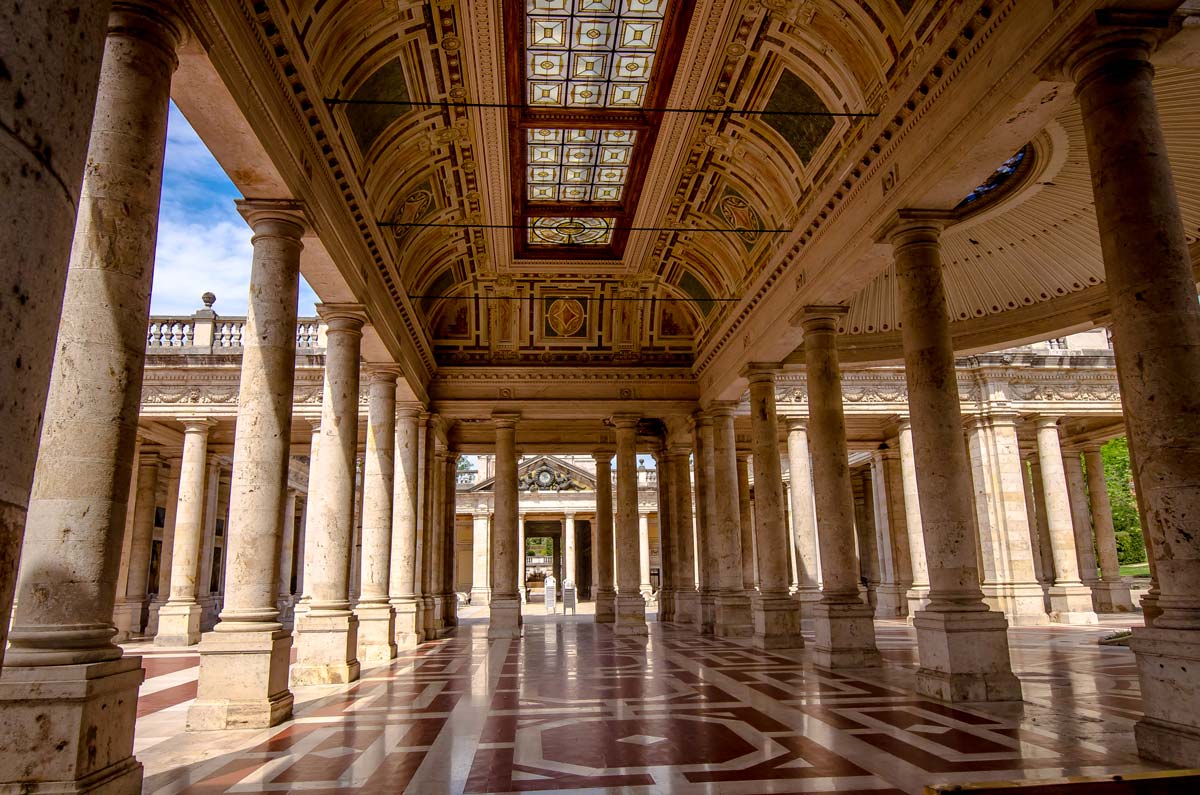
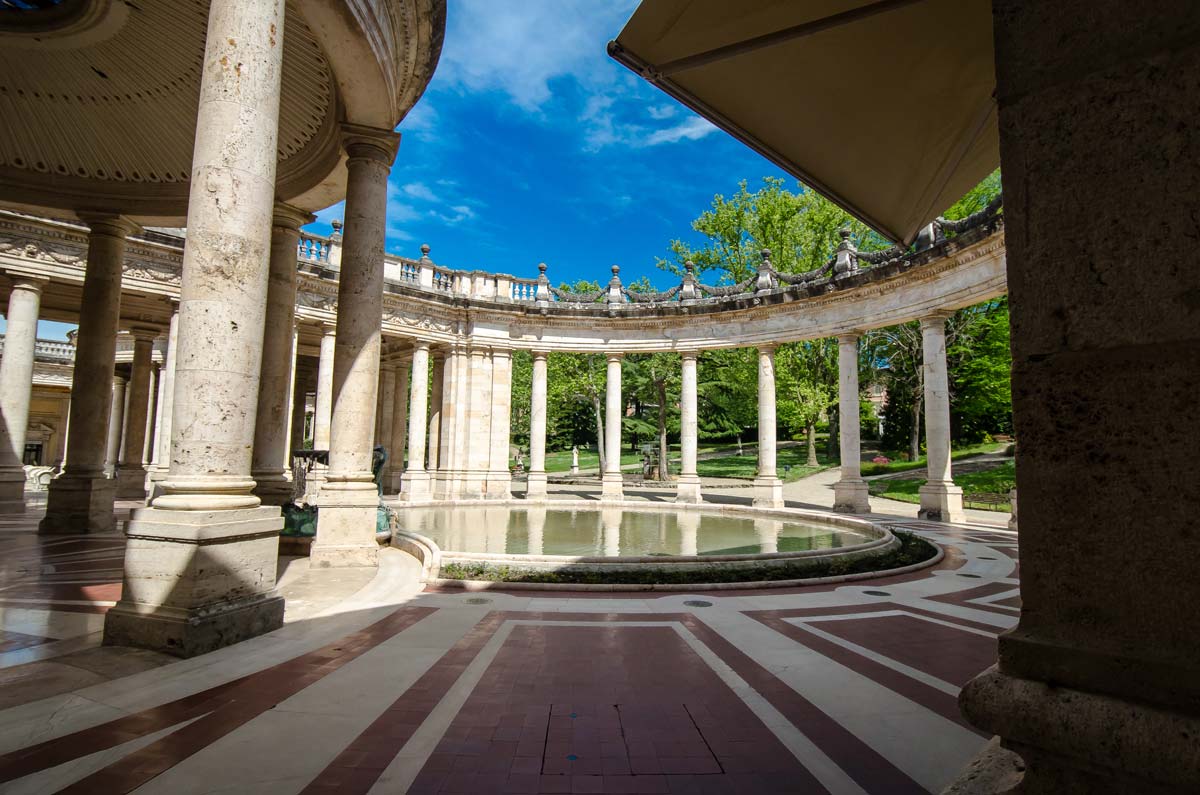
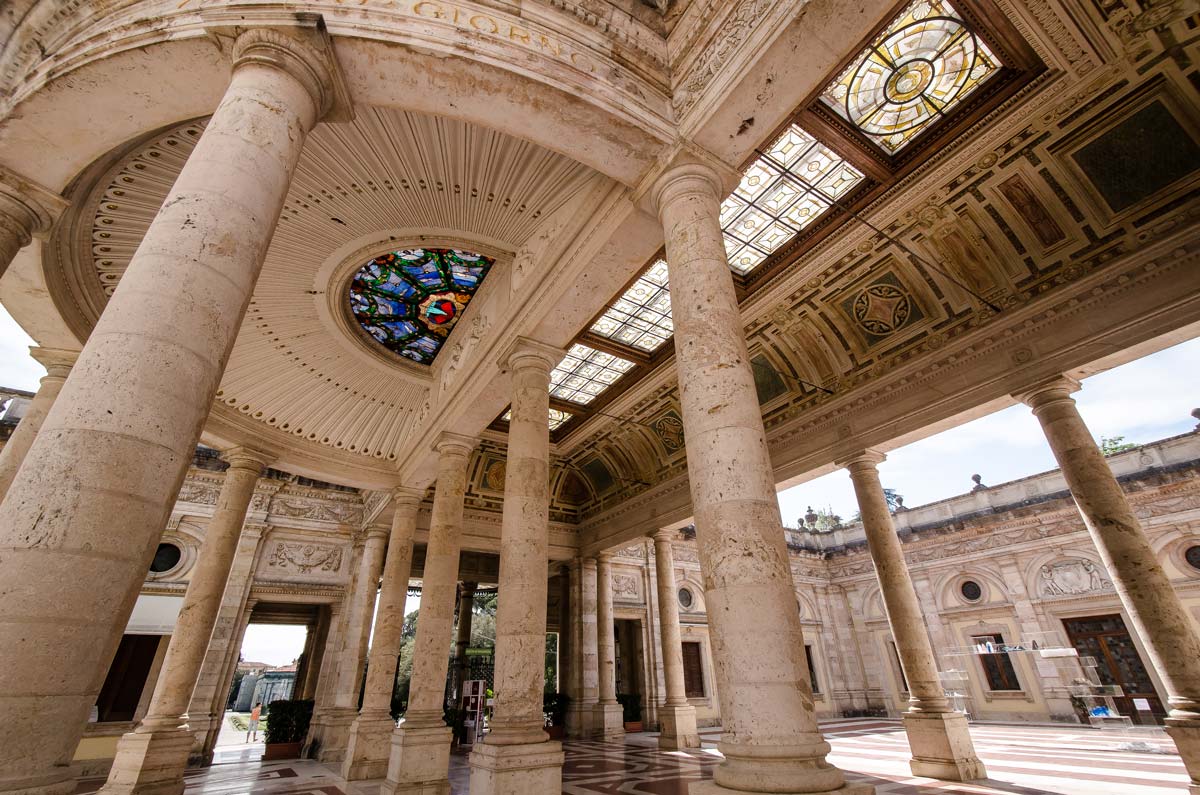
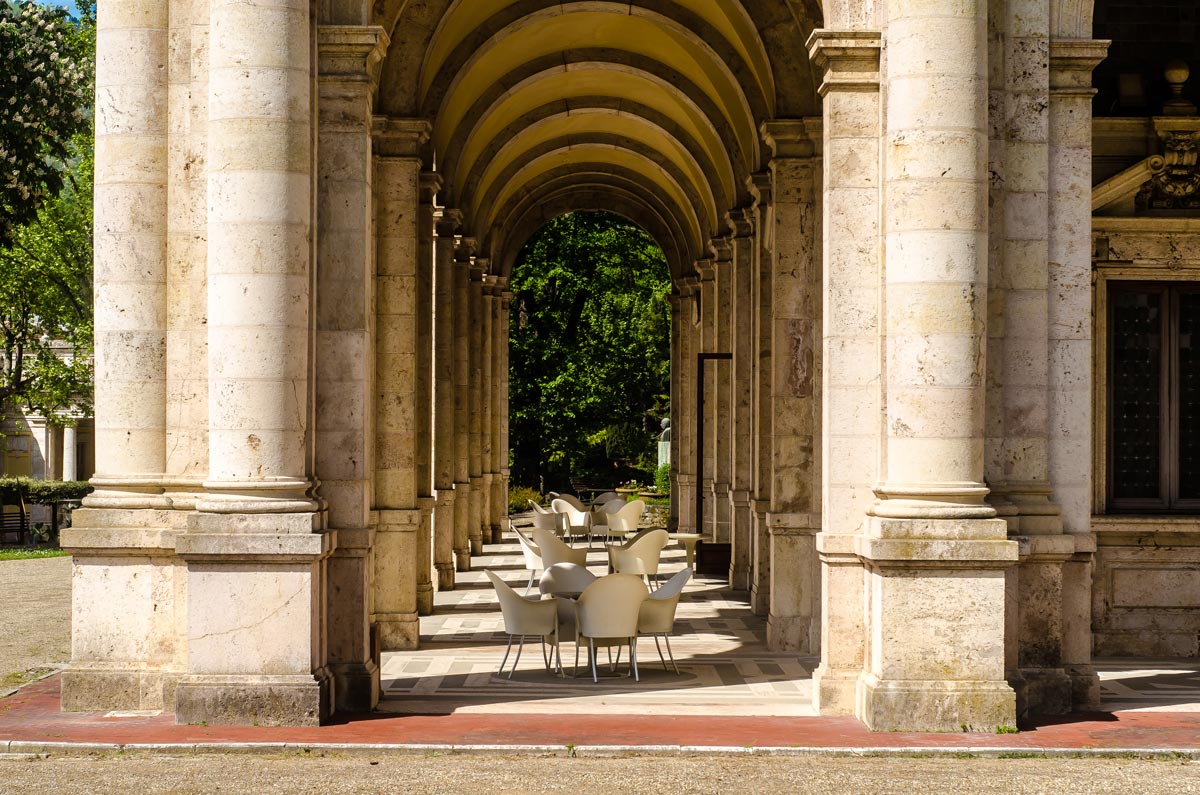
The gardens are exceptional: peaceful, pretty and full of nooks and crannies to explore. There’s a variety of sculptures and secondary buildings including a well and a small concert hall where we found a trio of musicians practising for an event in the evening. Much of this belongs to the same period as the outer gates of the Terme and were completed in 1929. Many of the sculptures were created by the same Corrado Vigni that made the sculptures above the entrance.
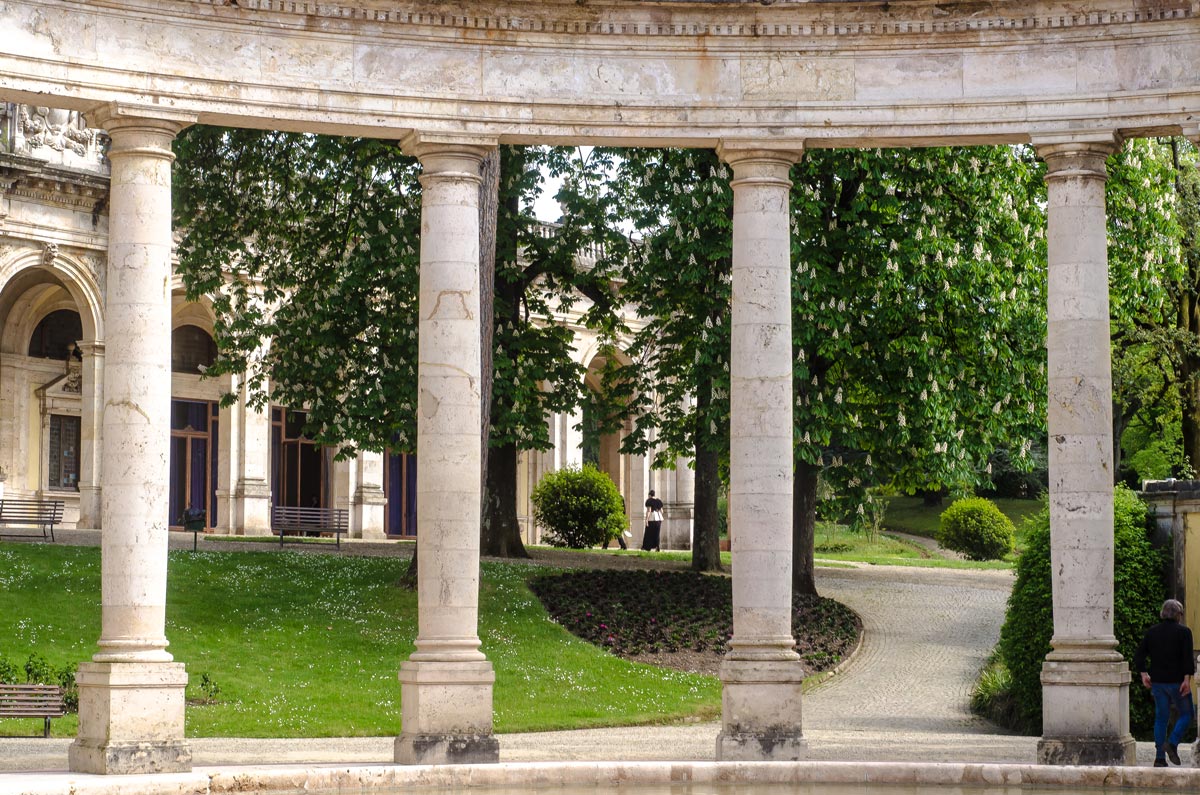
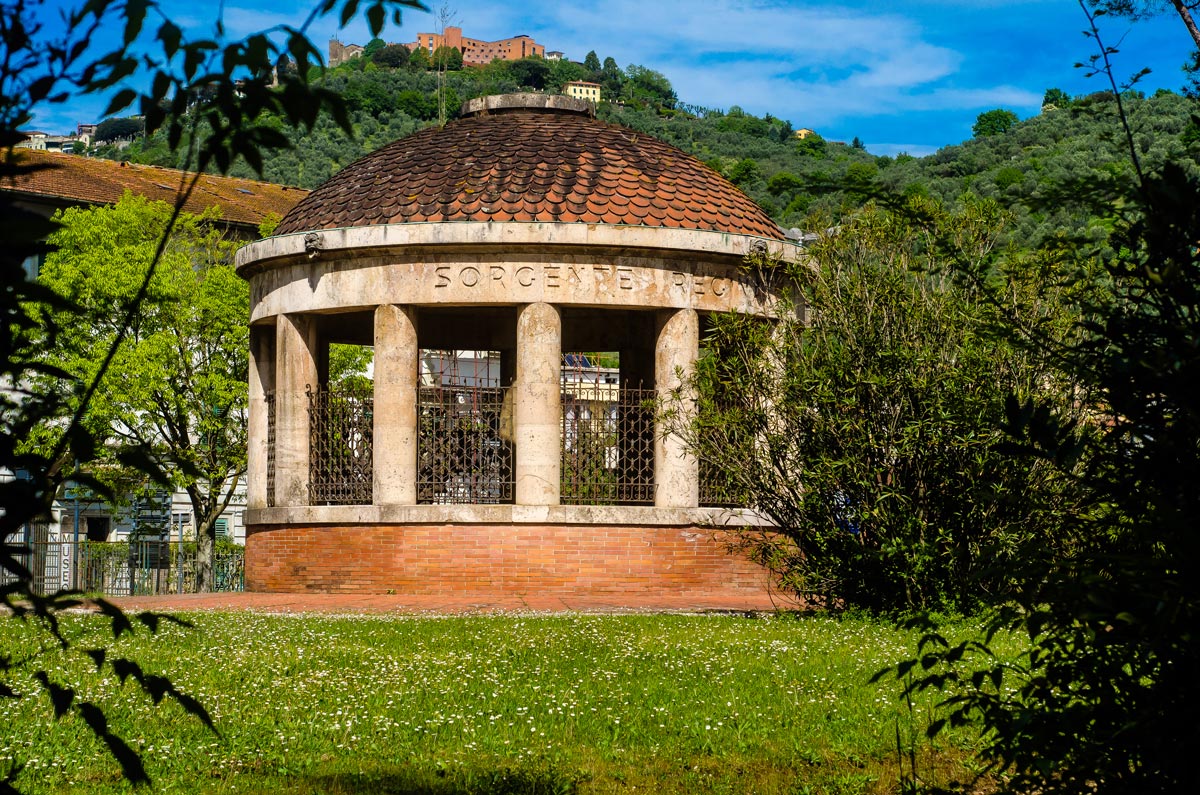
Below from the gardens a sculpture of a boar and The Heron and frog fountain by Raffaele Romanelli.
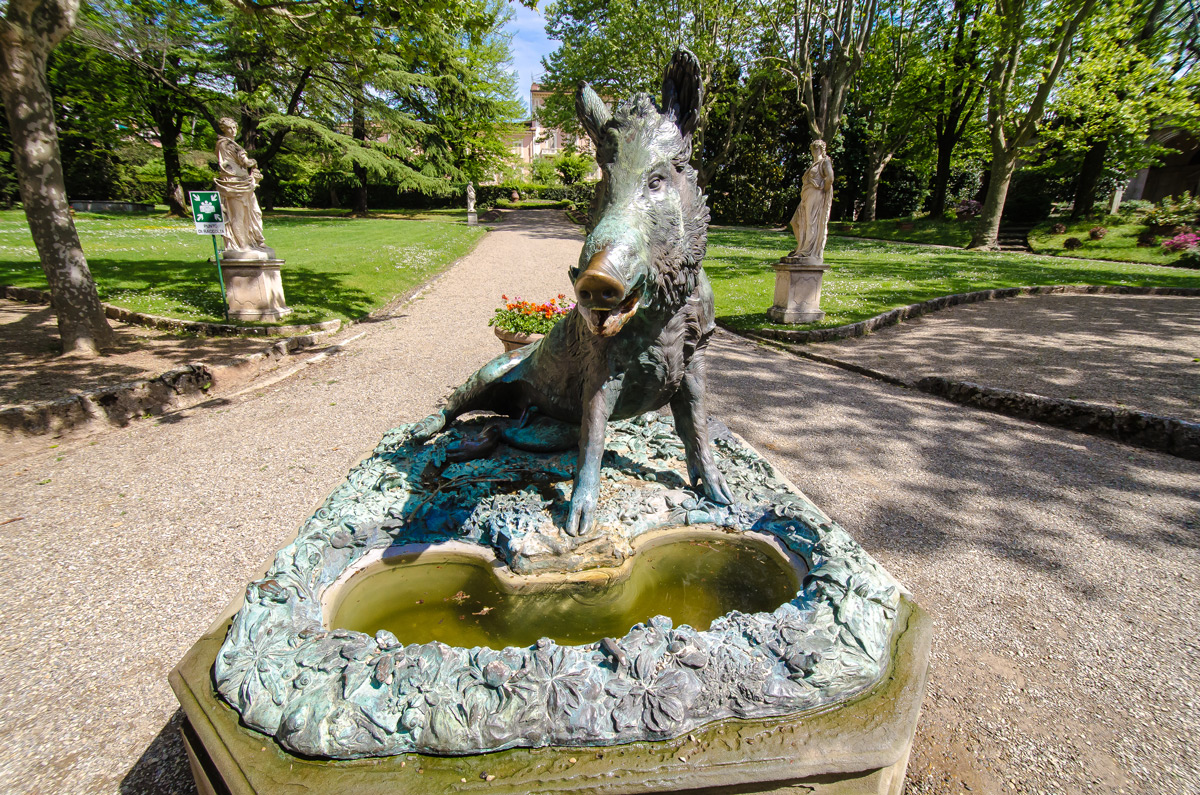
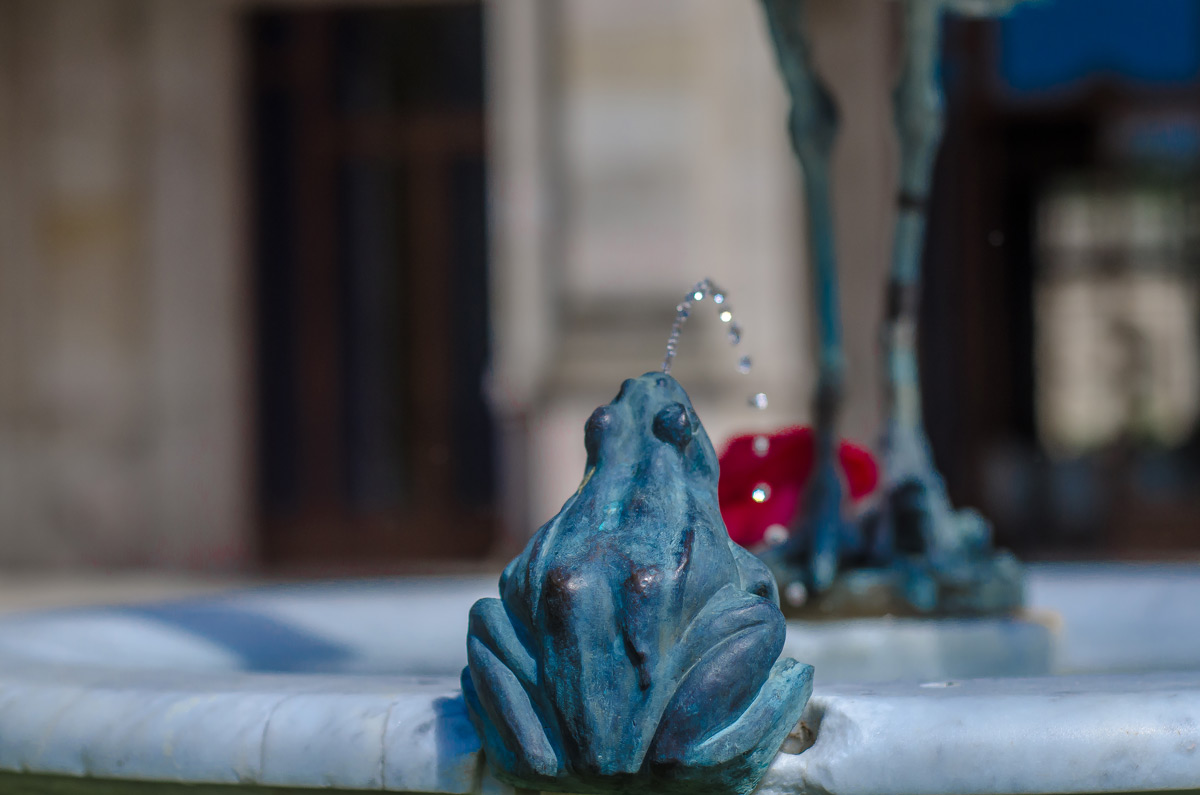
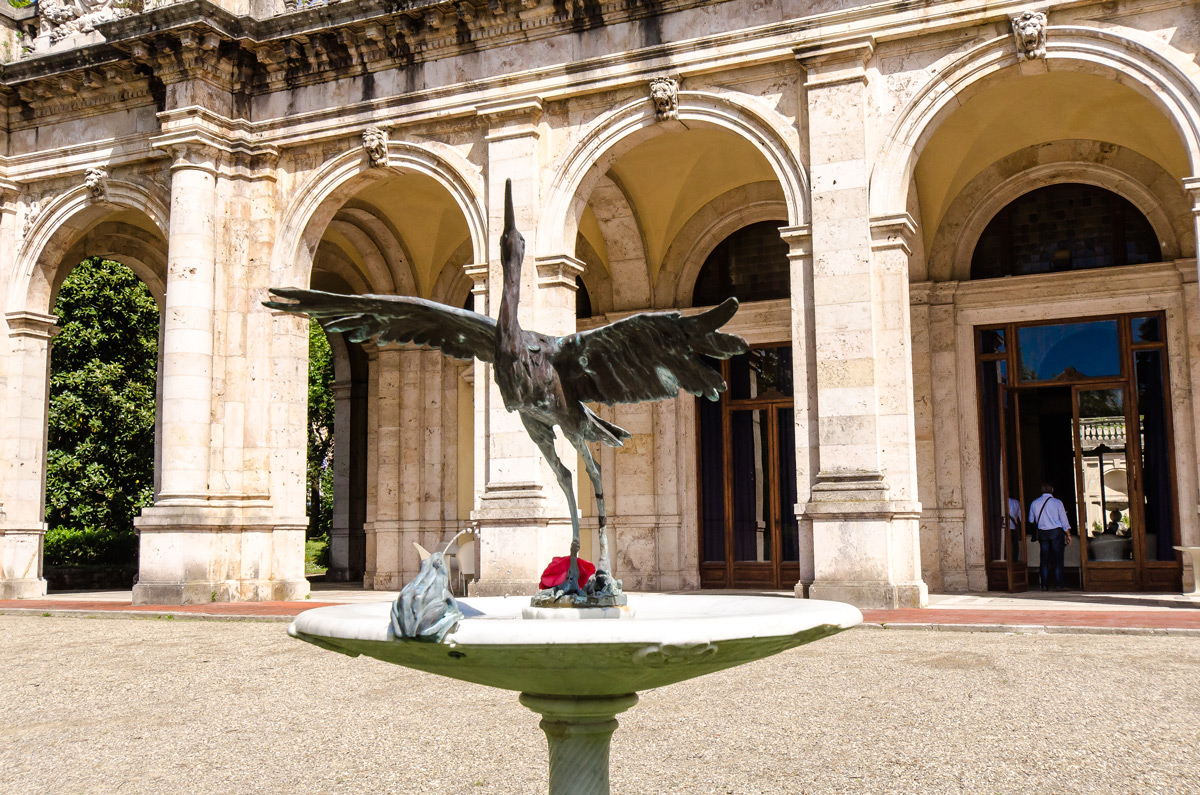
Most visitors wander around the Terme Tettuccio in either one of the two daily water tasting session (in the mornings and afternoons) with a glass of salty spring water in hand. Montecatini’s springs originate 60 to 80 meters underground and are rich in minerals, reaching the surface completely pure. Their effect is purifying, rehabilitative, liberating and diuretic, though you’ll need to match the water to your specific needs. The waters are: Tettuccio, Regina, Leopoldina and Rinfresco.
Each of the different water’s have an aesthetic element in the form of a series of panels by the ceramist Basilio Cascella, to signify: La Forza: The Strength, La Fonte: The Source, La Bellezza: The Beauty, L’adolescenza: The Adolescence, La Vecchiaia: Old Age, La Matvrita: Maturity, L’infanzia – Childhood
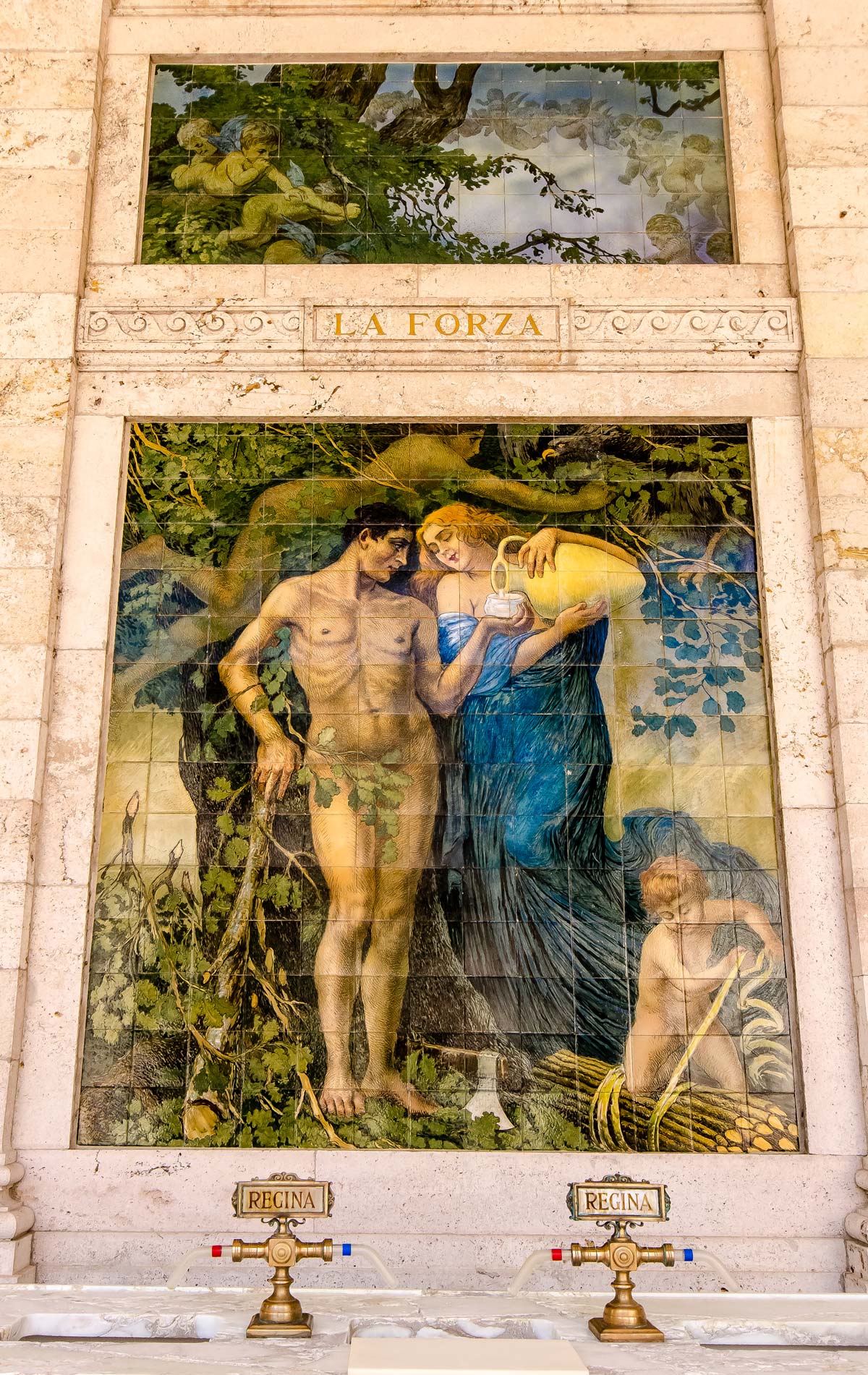
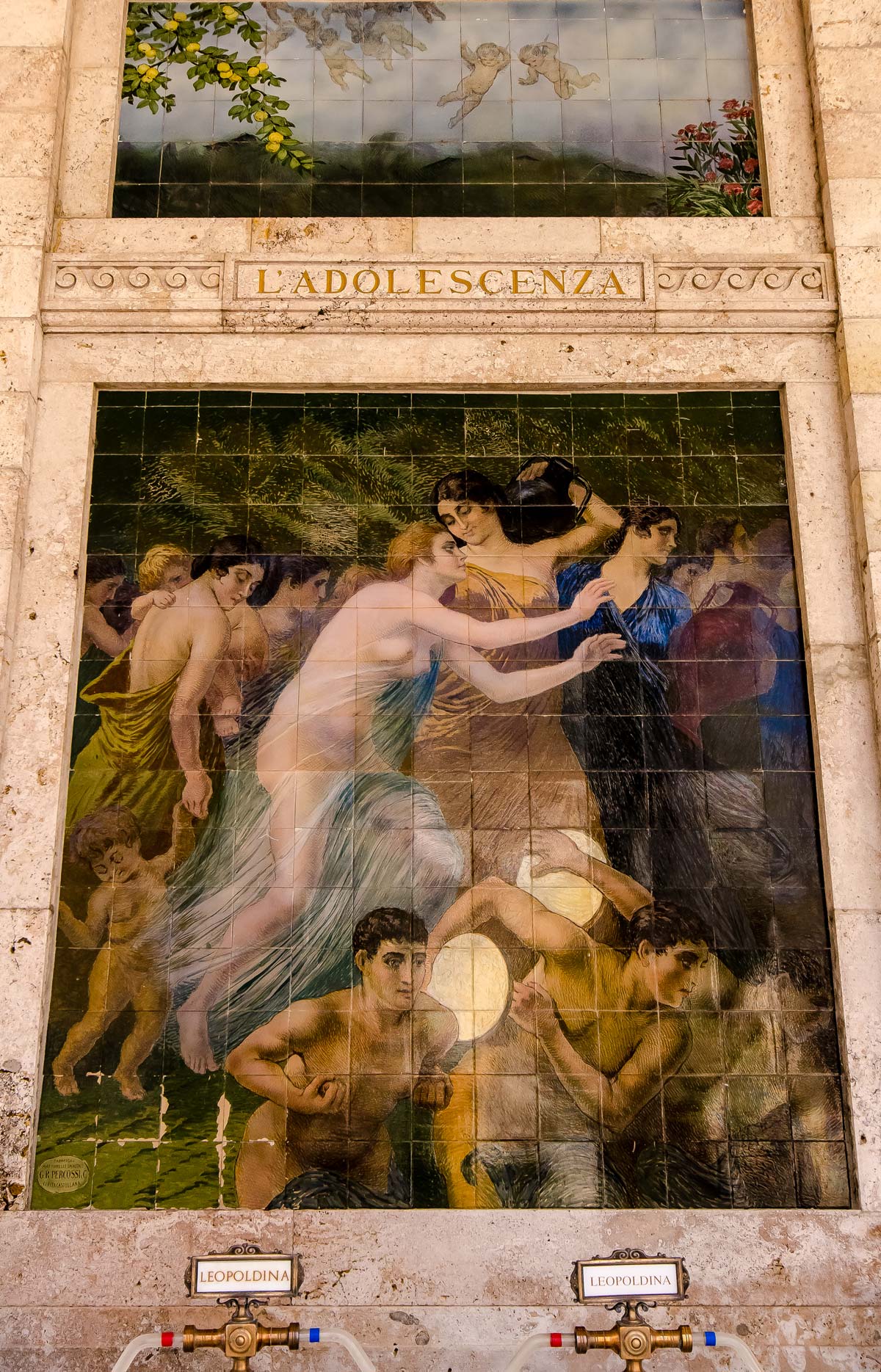
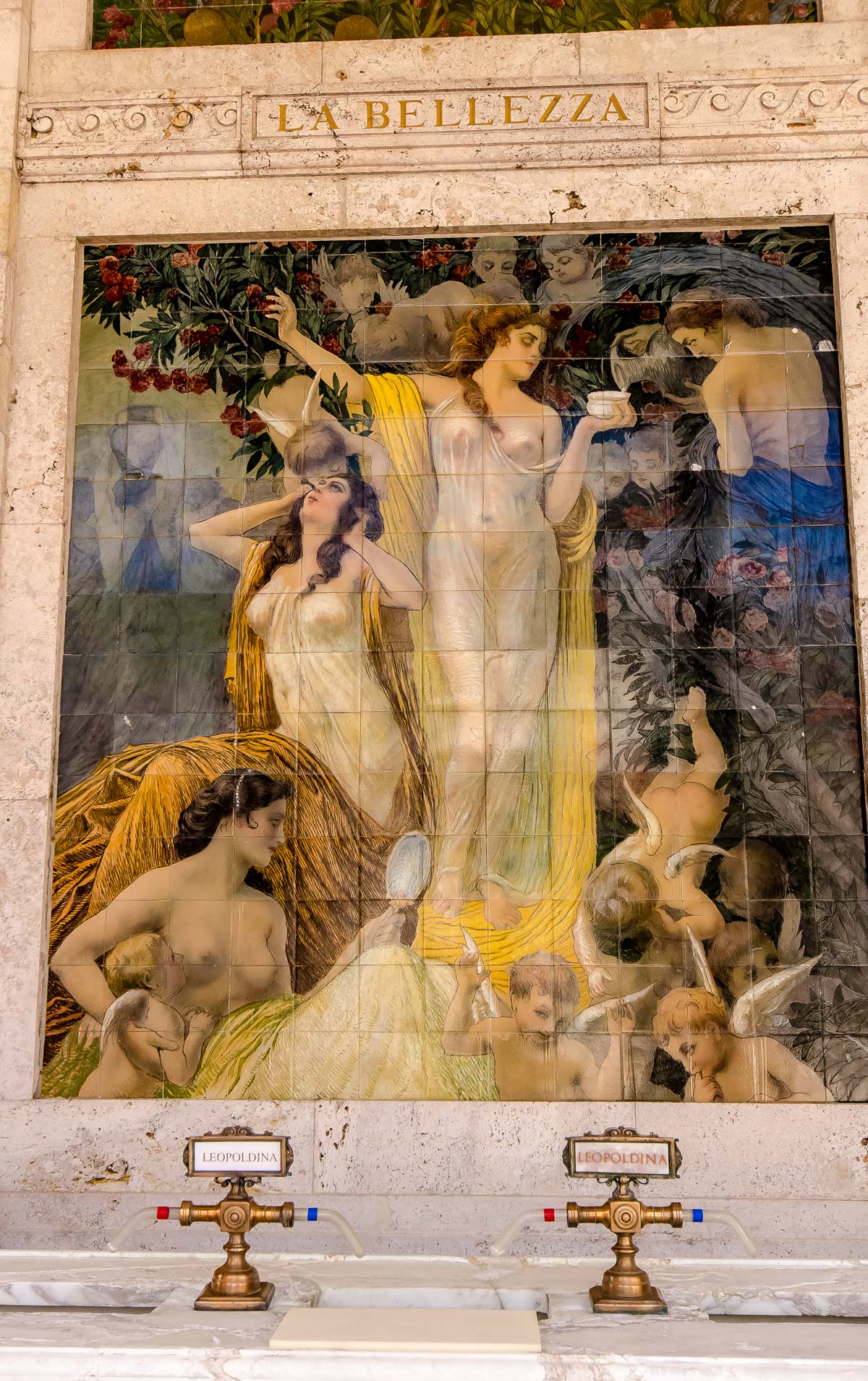
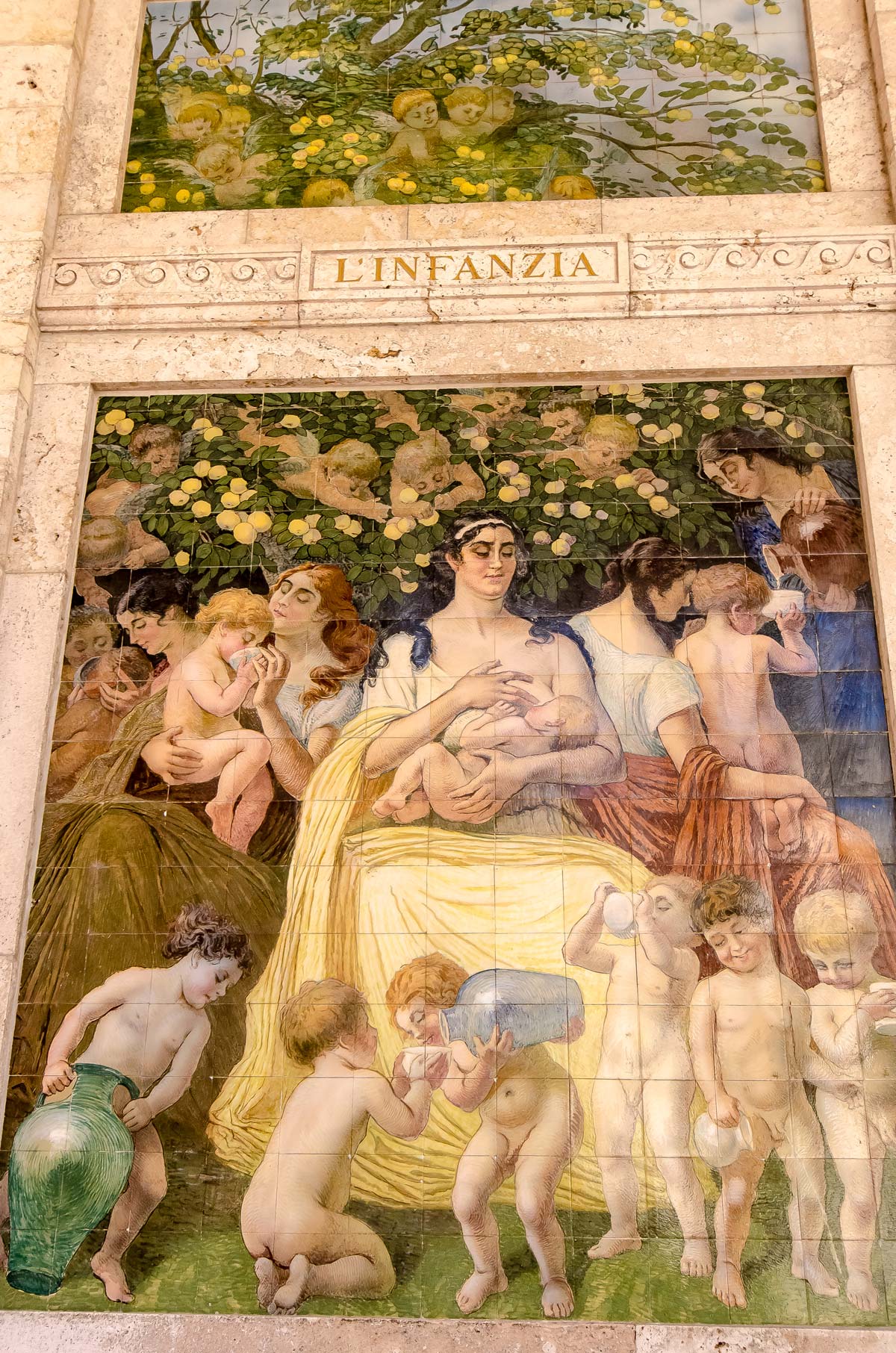
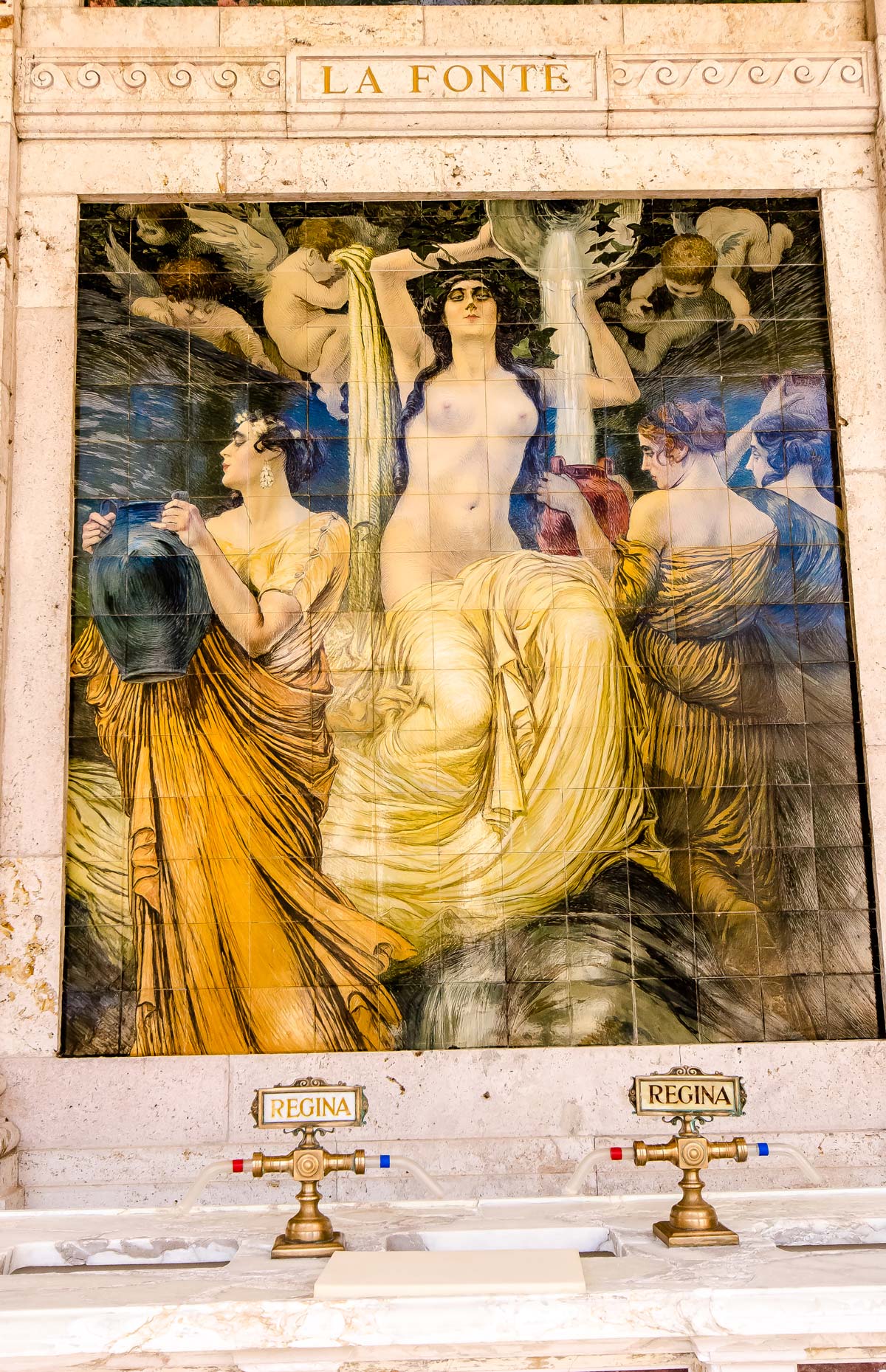
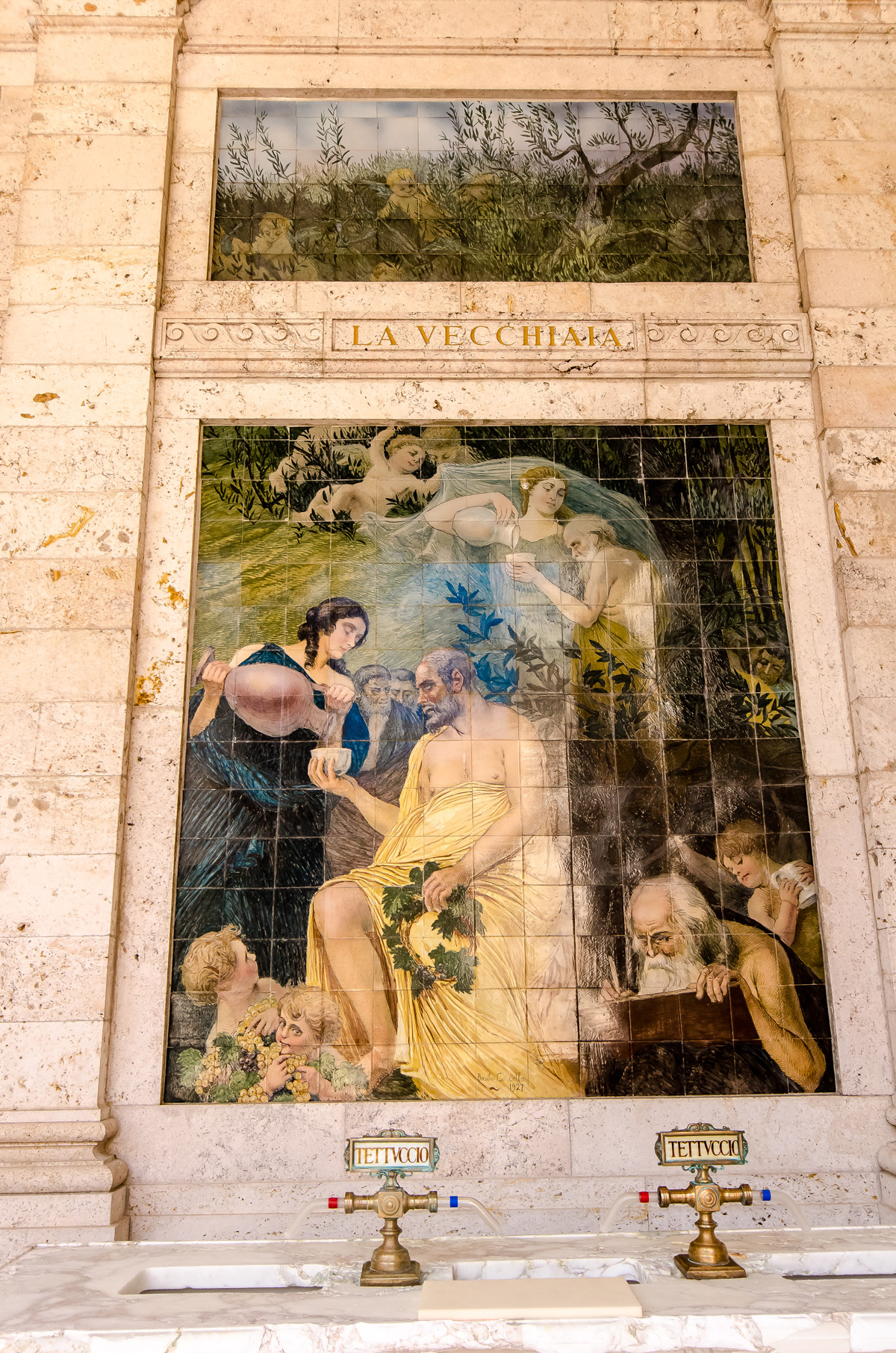
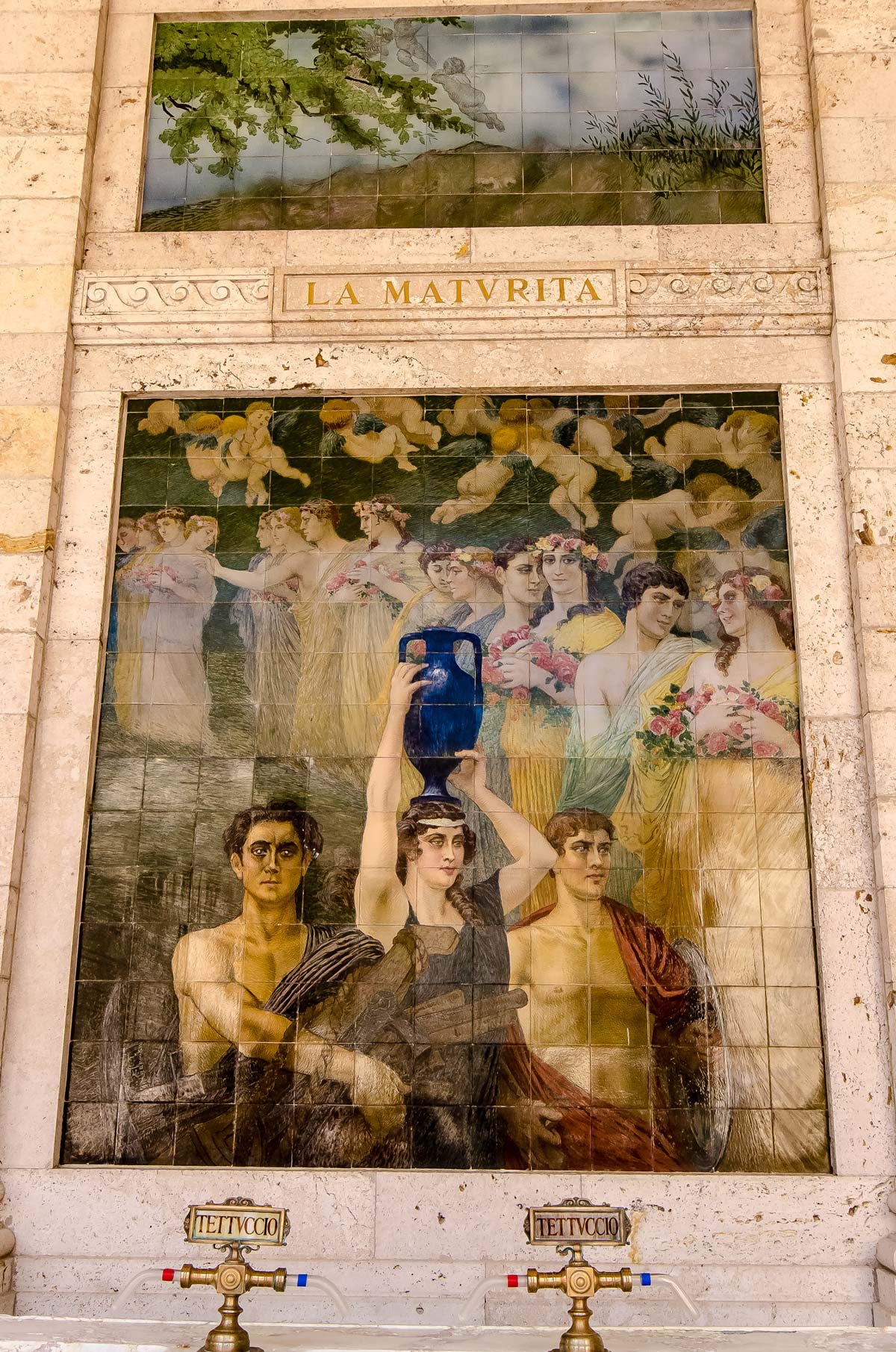
If you found this review helpful, please consider booking your hotels with this link, from which we may earn a small commission.
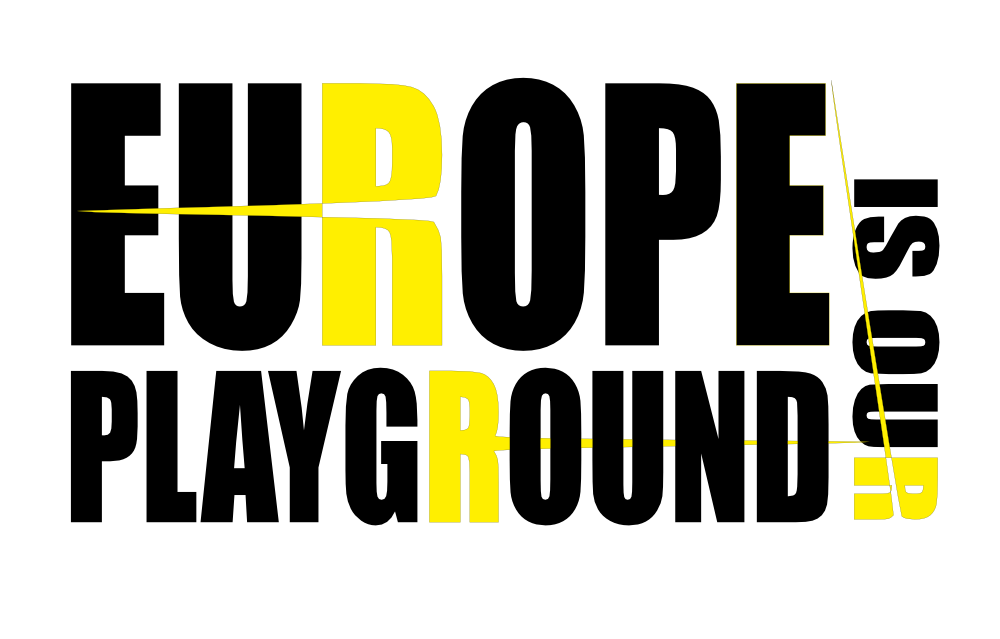
Is the spa open from Dec 22 – Jan 2?
Yes it should be open some of those days (excluding Mondays). This website lists summer and winter opening hours here.
And this is the official website: https://www.termemontecatini.it/en/opening-hours/